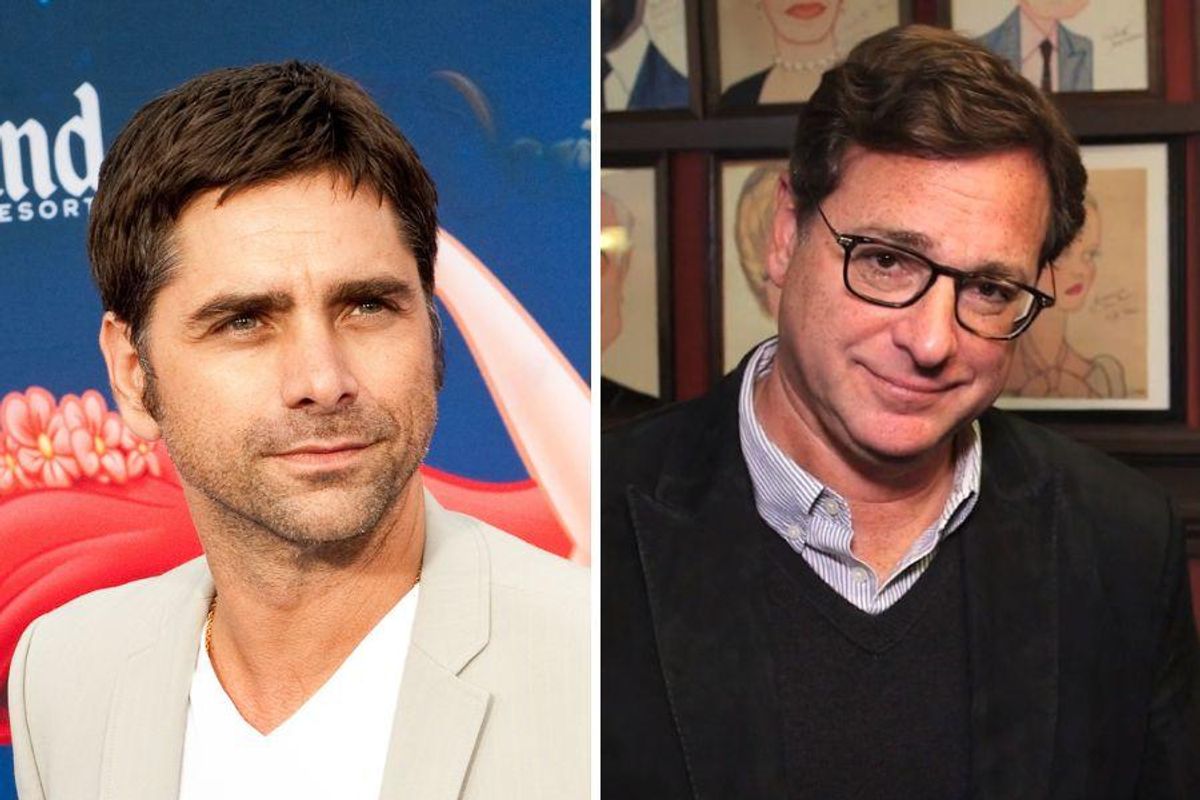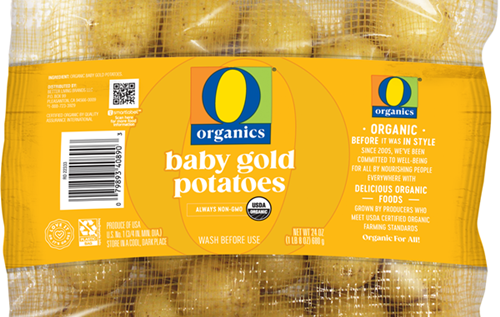John Stamos shares parenting advice given by Bob Saget and parents can relate
Sometimes a laugh is all you need.

John Stamos shares parenting advice from Bob Saget.
When a baby is born, most people expect that parents will immediately connect with the new infant, but that's not always the case. Of course, there are parents that feel an instant love and deep connection with their brand new baby and that's normal.
John Stamos recalled a conversation with his late friend Bob Saget about this very thing. Stamos became a dad at the age of 54 and confided in his friend about not feeling connected to his son, and Saget gave him a small gem of wisdom to hold onto.
In the caption of a sweet video of Stamos pretending to sneeze into tissues while holding his son, he wrote, "For the first few months I didn’t feel as connected with my son as I thought I would. Bob Saget said just wait until the first time he laughs at you." Stamos continued, "If this doesn’t cheer you up on a Wednesday, nothing will."
The video was full of pure joy from his son. Every time Stamos "sneezed," his son, who looks to be under a year in the clip, laughs hysterically. There's something about a baby's laugh that gets many people smiling, but it's the human admission in the caption that's resonating with some parents.
Connecting isn't always instant and for a celebrity like Stamos to casually mention his struggles with bonding with his child it can help others struggling feel less ashamed to admit their own feelings. It can seem that immediate bonding is the norm, and people may be surprised to know not everyone feels that way.
In fact, connecting or not connecting with a newborn are both normal reactions to bringing a baby home. Dr. Dotun Ogunyemi tells the American College of Obstetricians and Gynecologists that bonding occurs during the first year of an infant's life and not having feelings of closeness within the first few weeks is normal.
Flying House Threads also commented on the relatable post saying, "Honestly I felt the same way. Bob was right though. The first time my son looked at me and laughed like I was the funniest person in the world it melted my heart. Thank you for being so open and honest on here."
Hayley Stewart wrote, "Sometimes connections take time. When my daughter was born it wasn't instantaneous either. ❤️ and now she's all I can think about! She goes to sleep and I look at pictures of her on my phone because I miss her even tho she's in the other room haha parenthood hits everyone differently. Love this sweet video ❤️"
 Photo by Kelly Sikkema on Unsplash
Photo by Kelly Sikkema on UnsplashThe comments were full of support from other parents and people thanking Stamos for the video. Shannon Meuse wrote, "My daughter is 31 and I still remember the first time she laughed. She was 4 months old. I cried laughing. This video is pure joy ♥️"
No one can predict how they will respond emotionally when their newborn enters the world, but as long as parents keep being honest about their feelings then fewer new parents will feel alone. The old adage that it takes a village remains true. Our village may look just a little different nowadays.
- Dad hilariously live-tweets son's attempts to sneak a girl in and out ... ›
- A teacher's viral extra credit questions lure students into a phenomenal prank ›
- Jodie Sweetin from 'Full House' reveals the touching way that Bob Saget was part of her wedding ›
- Developmental scientist's "anti-parenting advice" goes viral - Upworthy ›
- Kristen Bell's honest parenting approach could help others - Upworthy ›
- Kristen Bell's honest parenting approach could help others - Upworthy ›
- The simple parenting tip that almost always works - Upworthy ›
- Bedroom parents versus living room parents - Upworthy ›
- Son refuses to do 'girl' chores - Upworthy ›


 O Organics Mexican-style blend cheese.via O Organics
O Organics Mexican-style blend cheese.via O Organics O Organics baby gold potatoes.via O Organics
O Organics baby gold potatoes.via O Organics O Organics tomato basil pasta sauce and extra virgin olive oil.via O Organics
O Organics tomato basil pasta sauce and extra virgin olive oil.via O Organics












 apples and bananas in brown cardboard boxPhoto by
apples and bananas in brown cardboard boxPhoto by